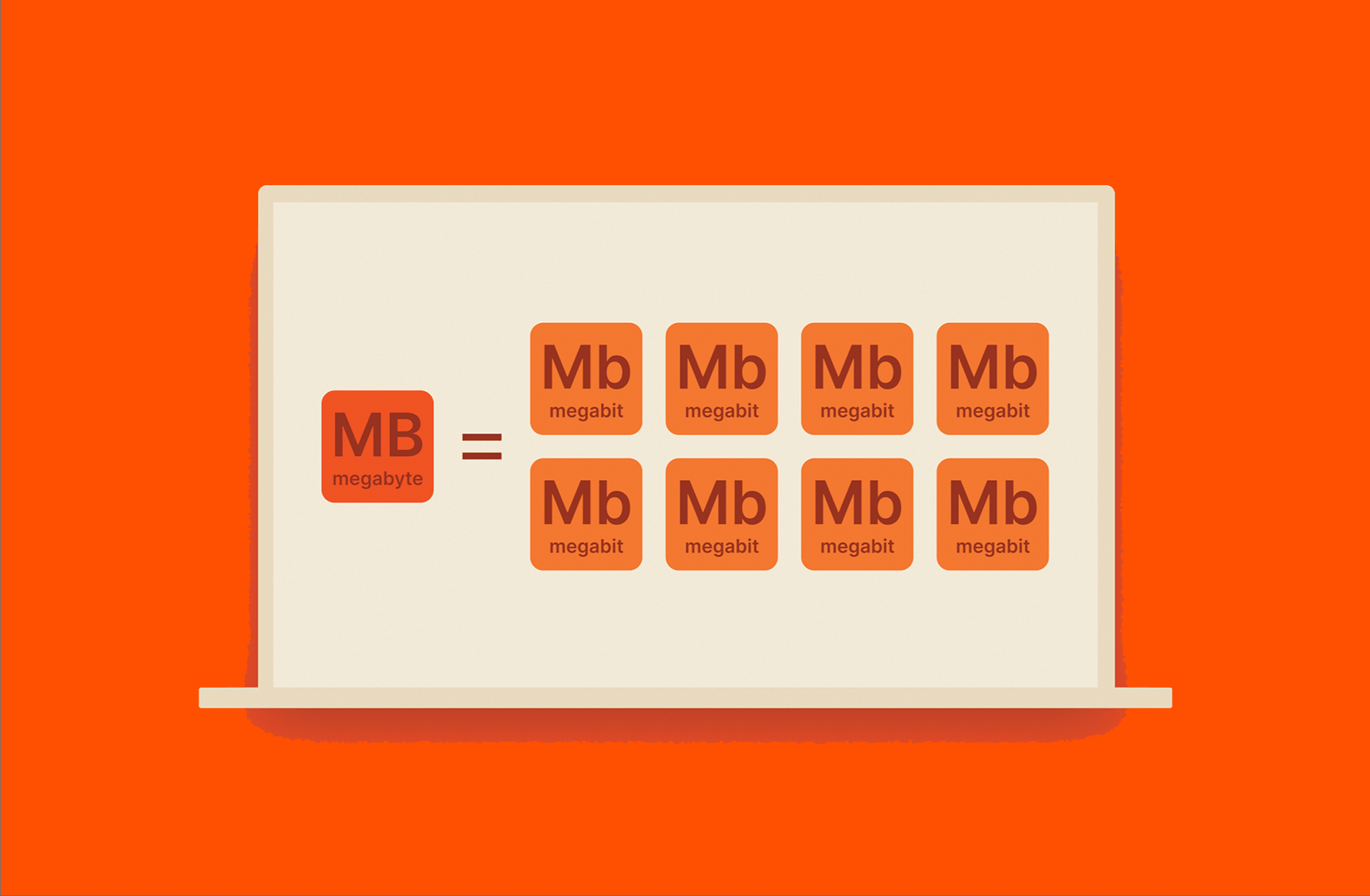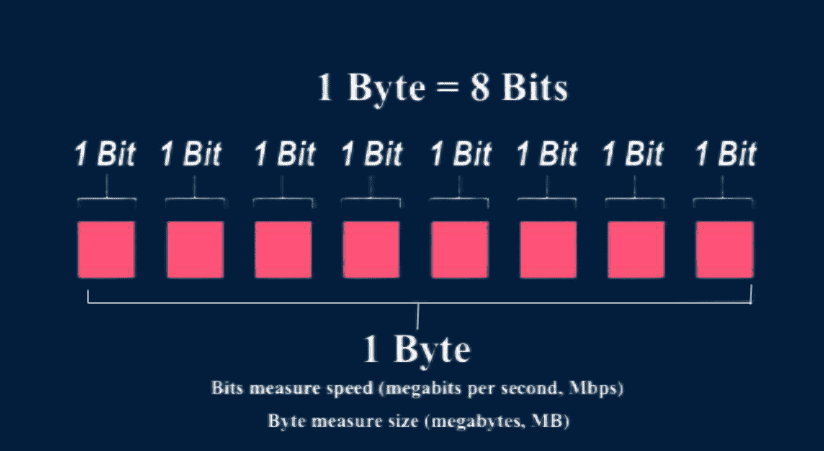The Function of Megabits Per Second in Online Gaming Efficiency
Wiki Article
Just How Megabits Per Second Influence Your Online Tasks
The idea of megabits per second (Mbps) plays a critical role in shaping our on-line experiences. As digital activities proliferate, recognizing the effects of Mbps on video gaming, video clip, and streaming conferencing comes to be significantly essential. Higher Mbps can enhance performance and lower disruptions, while inadequate rates might promote stress and inefficiency. Examining your house's certain demands in connection with these speeds is necessary, specifically as several gadgets try transmission capacity. Yet, the subtleties of just how Mbps impacts different online activities call for more exploration, particularly as our reliance on digital connectivity proceeds to evolve.Recognizing Megabits Per Second
When considering internet speed, it's vital to understand the concept of megabits per second (Mbps), which functions as a conventional dimension for data transfer prices. This metric measures just how much information can be transmitted over a net connection in one second, supplying a clear understanding of performance abilities - Megabits Per Second. For context, one megabit is equivalent to one million little bits, and Mbps is commonly made use of to share transmission capacity for different on-line tasksA higher Mbps shows a much faster internet link, enabling users to carry out jobs such as downloading files, browsing websites, and participating in on-line video gaming a lot more successfully. Common surfing requires around 1-5 Mbps, while streaming high-def video might demand 5-25 Mbps. Understanding these demands is crucial for figuring out the suitable internet rate required for details tasks.
In addition, the number of tools connected to a network can influence overall performance. Numerous individuals streaming, gaming, or downloading at the same time can stress readily available bandwidth, resulting in slower rates - Megabits Per Second. Reviewing individual online practices and requirements is important in selecting a net plan that lines up with one's requirements, ensuring a seamless digital experience
Streaming and Buffering Issues
Streaming high-definition material has actually ended up being a staple of modern-day on-line amusement, yet it is frequently accompanied by irritating buffering problems. These disturbances can dramatically take away from the checking out experience, bring about frustration and possible loss of audience involvement. Buffering occurs when the data transferred from the streaming solution is not obtained rapidly enough to keep a smooth playback, often because of not enough web rate gauged in megabits per second (Mbps)
Moreover, real-time streaming can be influenced by network blockage, which happens when multiple devices share the very same bandwidth. Subsequently, optimizing connection speed and making certain appropriate Mbps is important for a seamless streaming experience. As streaming services remain to evolve, recognizing the influence of Mbps on buffering concerns continues to be crucial for consumers looking for nonstop enjoyment.
Online Pc Gaming Efficiency
The influence of net rate on on-line tasks expands past streaming, considerably affecting on-line video gaming efficiency. In competitive gaming, reduced latency and high transmission capacity are critical for a seamless experience. A quick connection minimizes lag, permitting gamers to respond quickly to in-game events, which can be the difference between victory and loss.Bandwidth, measured in megabits per second (Mbps), plays an essential role in supporting numerous tools and gaming systems concurrently. Not enough bandwidth can cause dropped connections or decreased video game top quality, adversely impacting gameplay. As an example, online multiplayer video games call for considerable data transfer, specifically throughout peak gaming hours when various players are online.
Furthermore, the kind of game can likewise dictate the needed web speed. Hectic first-person shooters demand higher speeds to preserve responsiveness, while turn-based approach video games might function fairly well on lower speeds. As online video gaming remains to advance, with raising graphical fidelity and more complex multiplayer atmospheres, the demand for greater Mbps will just intensify. Consequently, players must guarantee they have adequate internet rate to enhance their gaming efficiency and general experience. Investing in a robust web link is important for players looking to enhance their performance and enjoyment.
Video Clip Conferencing Top Quality
In today's electronic landscape, video conferencing quality is greatly affected by web rate, especially in regards to bandwidth and latency. Top quality video calls call for adequate bandwidth to send audio and video clip information perfectly. Usually, a minimum of 1.5 Mbps upload and download speeds is recommended for standard meaning video, while high-definition video conferencing normally requires at the very least 3 Mbps.Latency, or the delay in between sending out and receiving information, likewise plays a critical function in the individual experience. Higher latency can lead to echo, lag, and disjointed interactions, which can hinder collaboration and involvement throughout conferences.
In addition, numerous individuals in a video clip conference can strain available data transfer, necessitating also greater rates. Network blockage, often brought on by synchronised tasks like streaming or downloading, can even more degrade video clip quality. Therefore, for organizations counting on video conferencing for remote collaboration, understanding the connection in between megabits per general and second communication high quality is necessary for preserving efficiency and enhancing digital communications.
Picking the Right Net Plan
Selecting a suitable net strategy is essential for making sure ideal efficiency in numerous on-line activities, specifically in setups that demand high transmission capacity, such as video clip conferencing and online gaming. Megabits Per Second. When considering a net strategy, it is vital to review both the rate and information allowance to match your certain usage requirementsFor homes with like it numerous individuals participating in synchronised activities, a strategy using greater megabits per second (Mbps) is recommended. Typically, a minimum of 25 Mbps appropriates for standard streaming and surfing, while plans surpassing 100 Mbps are preferable for more extensive tasks. Additionally, take into consideration the nature of your online activities; video clip conferencing calls for at the very least 1.5 Mbps submit rate, while on-line pc gaming might require a lower latency however constant link.
Endless data plans can avoid throttling and disturbances, especially if hefty use is expected. By attentively picking a web strategy customized to your demands, you anchor can improve your online experience, ensuring smooth, undisturbed accessibility to your preferred activities.
Conclusion
Finally, the value of megabits per second (Mbps) fit online tasks can not be overstated. Higher Mbps promotes seamless streaming, minimizes buffering, boosts gaming experiences, and guarantees high-quality video clip conferencing. On the other hand, insufficient bandwidth can result in aggravating interruptions and lessened performance throughout numerous tasks. A complete understanding of individual or investigate this site home Mbps demands is important for choosing an appropriate web plan that sufficiently sustains diverse online activities and user needs.

Commonly, a minimum of 25 Mbps is suitable for standard streaming and browsing, while strategies going beyond 100 Mbps are more effective for more extensive jobs. Additionally, consider the nature of your online tasks; video conferencing calls for at least 1.5 Mbps upload rate, while online gaming may need a reduced latency however consistent connection.
Report this wiki page